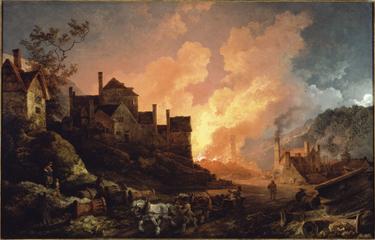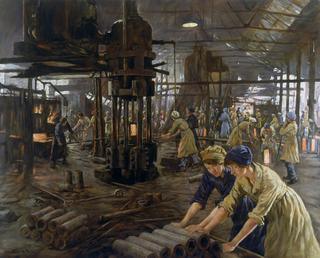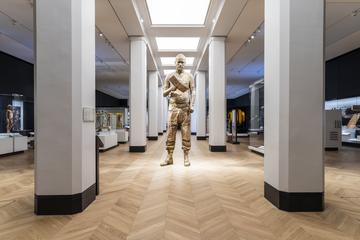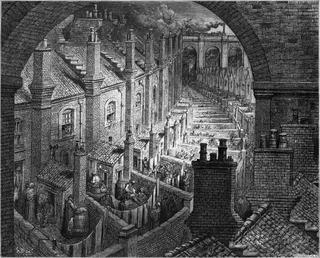
Aquatint. London and Birmingham Railroad, view taken from under the Hampstead Road Bridge
- Made:
- 1837
- maker:
- Ackermann and Company and Thomas Talbot Bury



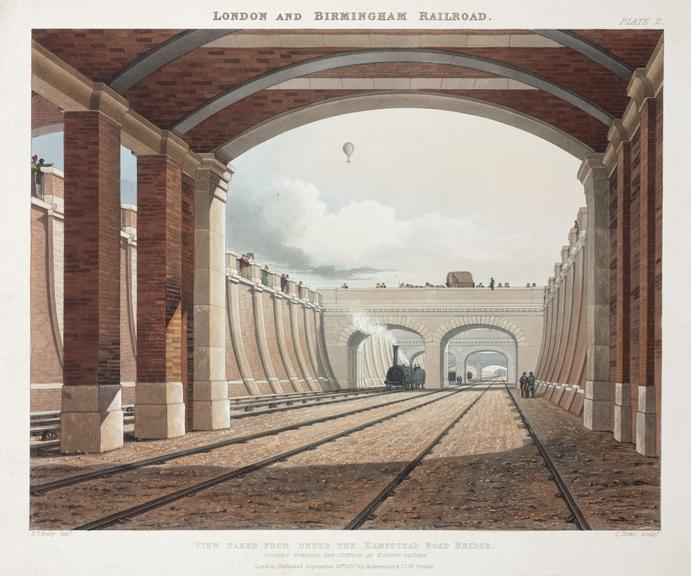
Aquatint. London and Birmingham Railroad. View taken from under the Hampstead Road Bridge. Engraved by C. Hunt after T.T. Bury. Published, Ackermann, London, September 18th 1837. [ Being plate II of Thomas Talbot Bury's Views on the Liverpool and Manchester Railway.]
This aquatint presents a view of the London & Birmingham Railway, looking toward Euston Station from under the Hampstead Road Bridge. Euston was the line’s London terminus, and thus London’s first inter-city railway station. This part of the line is a ‘cutting’ — a type of excavation that carves a route through rock or dirt. Lined with expertly illustrated brick and stone, the cutting has the striking look of a man-made gorge.
The print unites three different modes of transport in a single image. On the bridge above the line we see pedestrians and a horse-drawn carriage on the road. Below, we see road transport’s new competitor: a steam-powered locomotive pulling a train of carriages. Most perplexing, however, is the balloon in the sky above. Why has it been included in this view of the railway? Perhaps it alludes to the fact that by 1837 (when this print was made) ‘railway mania’ had taken hold throughout the country. A similar thing had happened after successful balloon flights in the 1780s, when ‘balloonomania’ struck in France and quickly spread overseas.
Thomas Talbot Bury (1809–1877) produced the drawing that this aquatint is based on. Bury was an architect and artist who engaged in a wide variety of projects. Perhaps his most high profile project was designing details of the Houses of Parliament with fellow architect-artist August Pugin. All in all, Bury’s major buildings include 35 churches and chapels, 15 parsonages, 12 schools, and 20 other large public buildings and private residences in various parts of England and Wales. His artistic practice was similarly varied, including a large picture representing, in a single view, all the buildings he designed (now in the RIBA collection). During the railway mania of the 1830s, he made many drawings of railways. Although Bury is known to have sometimes done the engraving work himself, these railway prints were usually engraved by someone else.
This aquatint print is part of the series ‘Six Coloured Views on the London and Birmingham Railway, from Drawings made on the Line’, published by Ackermann. The firm’s Anglo-German founder, Rudolph Ackermann, was an early adopter of lithographs and the firm became famous for popularizing the new print medium. Even so, Ackermann continued to publish other types of print, as demonstrated by this aquatint series.
It has been estimated that no fewer than 2,000 prints of railway subjects were produced during the years 1830 to the late 1840s, and scarcely a line opened without at least one view of its engineering accomplishments being published. It is difficult for us today to understand the emotional as well as financial commitment to railways during these early years. The railway was often seen as a slowly spreading symbol of change and progress towards a better world.
